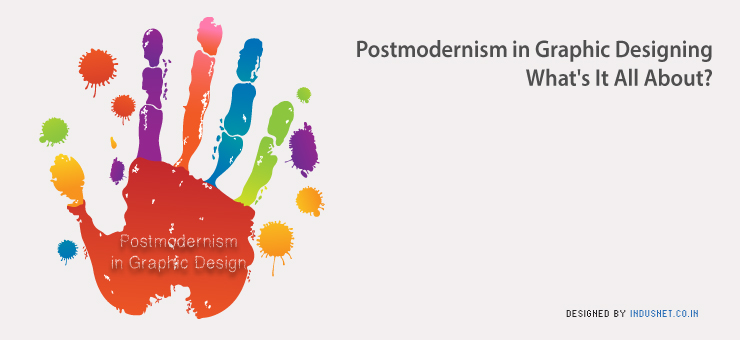
Officially, we are not in the postmodern era anymore. Postmodernism began as a reaction to the modern movement, which lasted from early 20th century to 1960s. During the modern age, there was an increased focus on geometrical shapes, respect to order and Hellenistic traditions, and also, to all things that are sublime and profound.
History of postmodernism
Postmodernism started as a reaction to the hegemony of modernism and questioned the ethics of sticking to artistic rules. What resulted was unbridled creativity, artistic fervor and a philosophical outlook that questioned existing ethos. By the early 1990s, post-post modernism came into being, again questioning the premise of postmodernism. Post-postmodernism again harked back to modernism or, tried to modify existing postmodernism.
However, there is a lot to learn from postmodernism, when it comes to graphic designing. We must remember that postmodernism took birth during the time when computers were nascent and beginning to ascend in their importance. The term came to describe designs that distorted or amplified established code. Postmodernism thus came to criticize ‘glass box’ structures of the modern era, accepted typographies, and standard stencils. Postmodernism focuses on wit, symbolism, individual and non-linear realities and a nonchalance towards metanarratives.
Here are some of the main tenets of postmodernism that can be used in graphic designing:
• Challenge existing norms
Postmodernism has always challenged norms or tried to distort what already exists. We have sometimes advised our clients to remain conservative and staid but what if we could design a website that not only looks staid, but pokes fun at itself of being staid? That will not only attract the serious types, but also the hipster crowds who are always looking for the now derided word ‘irony’, apparently. Using arbitrary placement of geometrical shapes instead of following norms can be one of the options for graphic designers.
• Use wit
When it comes to writing we copy, one could borrow a lot of ideas from postmodernism. Instead of using corporate language that seems stuffy, one could challenge established norms by using wit, metaphors and sarcasm. While we do not advise writing sarcastic web copy, one can always poke fun at oneself or the profession one is into, in a good natured way. Arbitrary use of geometric shapes and witty text are hallmarks of postmodern design. This is something that graphic designers must make note of.
• Unconventional materials
The punk movement made use of unconventional instruments to make music. They also made use of unconventional material to market their events with the help of collages and posters. With that in mind, graphic designers can use technologies that are not usually used to design a website or logo. How about using just the paint brush in Illustrator to create a logo, instead of using a 3D software like CorelDraw? The possibilities are endless.
• Use low budget to your advantage
Postmodernism has always challenged authority, staidness and extravagance. With its truthfulness to ingenuity and originality, graphic designers have a lot to learn from. If your client cannot afford a lot of money on design, why not use free-hand and jagged designs that can be created fast, to promote their websites? These designs not only look trendy and postmodern but also send a subliminal message that it is not necessary to spend a lot of money on building websites.
• Challenge typography
Typography has often suggested that we use specific types for specific purposes. Why not use a combination of different fonts, styles and typographies to create something that is an altered version of reality? When graphic designers begin to have fun and challenge the rules they were taught at design school, a lot of creativity can begin to flow.
There is much to learn from postmodernism and we feel it is mandatory that all graphic and web designers begin to understand this important intellectual and cultural movement. While it may not be necessary to understand certain philosophical aspects of postmodernism at the design level, it will certainly be a great boon to designers who are looking for ways to create something new and different. In fact, postmodernism ahs always placed a thrust on innovation, creativity and originality, all of which are important in designing.